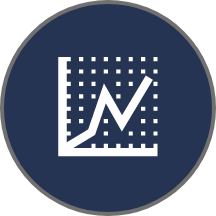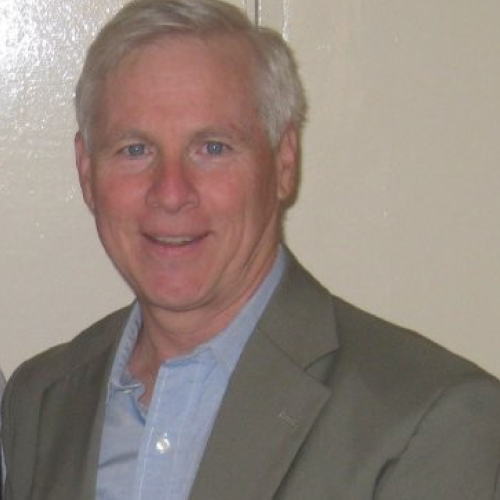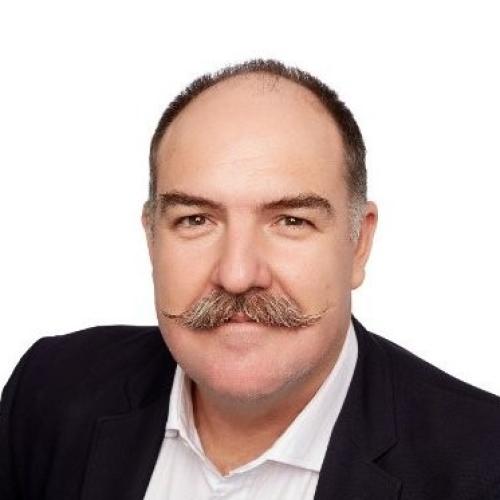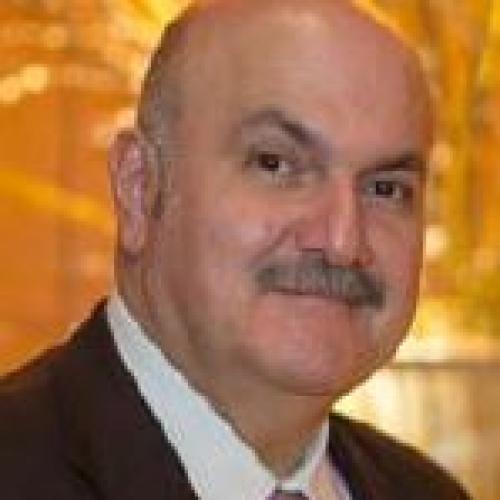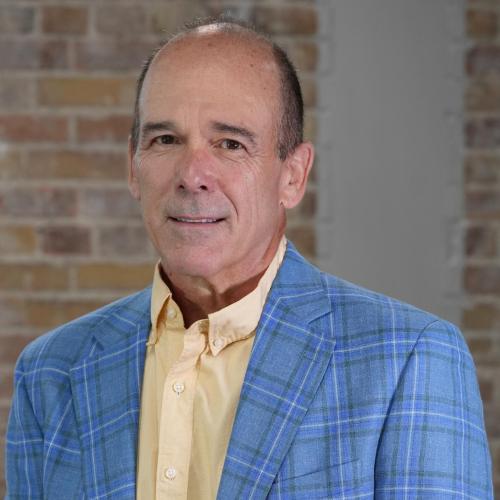Please recap your technology and how its developed since we last spoke towards the end of 2022.
Our original technology started by understanding that there was a real need for cats to see more healthcare. In North America, less than half of the 60 million owned cats see a veterinarian on a regular basis and a lot of them don't go at all. End of life euthanasia stats in North America show us a very large percentage never see a veterinarian in the year previous to their euthanasia, which means these cats are suffering
I was doing work in the multinational space with pain products and I approached feline specialists who were aware of facial pain scales that were available. We had access to labeled data sets from feline specialists, applied AI to these scales and saw that we were over 85% precise. So, this idea of visual pain recognition, especially for cats where they hold subtle cues in their face, was really exciting for us and that’s what our product does.
...this idea of visual pain recognition, especially for cats where they hold subtle cues in their face
Our tech is digital so if you think about food production and drug creation, it starts with molecules and a hypothesis, we perfect and test, and then we roll it out. Machine learning is almost the opposite, we get smarter and smarter the more we're testing. We're only getting better as we access more data because the computer is doing the training, not the humans. This has been a real challenge for us in the industry because it conflicts with what has been done in the past.
When we last spoke, we fundamentally believed, and still do, that the pet parent is going to drive some of the big innovative changes in the industry. A lot of digital applications that we see in the industry today are based in the marketing arena, talking directly to the pet parent. We believe that it has to be a one-on-one engagement to do better for the species. So, the technology that we're creating is actually that bridge between knowing “I need to do something” and then getting to the veterinarian.
We tested with direct to consumer, driving revenue direct from the pet owner and having them start the conversation. Making a scalable and valuable consumer facing product is doable, but it requires very deep pockets and a lot of marketing. Starting with the pet parents is key, but we actually pivoted and said, okay, where can we find populations of cat parents that are already online and that's through everybody's apps. So we've pivoted to an API model, which is very common in every other digital space and are able to plug into platforms, meaning that we're essentially white labeled. Our core business is being deadly accurate on the assessment of the photos, and then starting to layer validated data that we can get from these integrated platforms. It's been wildly successful in terms of engaging partners. We have contracts now in France and Singapore and we're just finalizing one in the US. So people are really, really excited about our technology. What we're finding is we create the stickiness that they need on their apps because it's one thing to have an app and roll it out to pet parents through clinics or direct, it's another to get them to stay on it and come back over and over.
...we've pivoted to an API model
It's an acute pain score right now, but as we track over the lifetime of the animal, whoever has our technology on their platform can track, through visualization, the health of that animal over time. Because we’re checking in and we're just asking people to take a picture, or we can access the camera roll and we'll go find a picture of that animal on their camera and we'll just be monitoring. We're turning people's phones into a medical device for their pet. That sense that we're in the back end assessing, ensures that our platform partners are getting a product that's really going to help animals. Whether they’re a service that allows you to talk to a vet, selling pet food, kitty litter, a wearable, or maybe a shelter, whatever they are, they build the conversation around the pet parent.
As more pictures come in, we're able to layer more data into our solution. So today it's acute pain, tomorrow it's visual video assessment. Down the road, it could be a diagnosis of conditions or predictors of conditions. This is just visual AI at its best for animals that can't talk.
How has your commercialization journey progressed over the last 12 months?
Contracts are coming in, so we’re in a good place. Even though there are limitations in our model today, there's a willingness to pay, and there’s traction. There are two ways to look at this: when you’re in it, it feels super heavy and complicated but, if you back out of it, it's actually quite simple and very formulaic, you have to somehow demonstrate traction.
What we're doing in artificial intelligence is very conceptual and from an animal health and pet wellness point of view, this is not our home base, right? We're used to creating products and selling material. But the formula is the same regardless of whether you're in digital or if you're in a product. You must demonstrate that somebody wants to pay for it. But to get there, we had to focus. There are so many potential use cases that were rolling around and all the different ways to use our technology was super noisy because all of them are big. If we just focused on one application, say the end-of-life monitoring for cats, that's already a big application use case. Our big pivot was saying we're going to sell an API and we are going to be a technology company. Yes, we are an animal health company, but we're a technology company first and we happen to be taking a hard run at the vertical of pet health. We want to be the leader in visual assessment in the vertical of animal health.
...we're a technology company first and we happen to be taking a hard run at the vertical of pet health
Open AI is going to have a billion dollars in revenue, blowing the doors off what they thought they were going to be doing at this stage. But it’s not perfect technology yet and we’ve been trained in the consumer realm to be ok with digital innovation not always working out of the gate. But they are building out a very strong horizontal bench. So in the first iteration of our technology, we had built in a pre-processor for the cat face. Processing the actual faces and capturing the angle of the face to get the correct score has already been recreated twice with broader horizontal platforms. What we're bringing is the pain scoring, the actual animal health insight into that tech. The big companies are so busy growing horizontally that they're not looking at all of the possible verticals. Pet health is one of the few that hasn't been fully blown up or explored. So, we’re pioneering in the pet health space, but we're kind of behind when you look at other tech, other industries and the use of AI.
As a tech company focused on animal health, how have you approached the network, partners and investors required to commercialize?
I'm trying to weigh it equally. Strategically, my early investors were all veterinary professionals, and I did that on purpose because I wanted it to come from the people that truly had the highest vested interest in the health of the animal. But now the VC conversations that I'm having are all AI based. Now we’ve got a good balance of both AI investors and pet industry investors, but they’re sitting here and they're waiting for a signal from each other to go. The AI people want to hear from veterinary professionals that this is solid. The veterinary professionals want to know if AI people think this is a good idea. And I'm happy to report things are moving along quite well in both camps. We are pioneering something that's incredibly unique, we're in a very good space.
Now we’ve got a good balance of both AI investors and pet industry investors
Can you share how you’ve managed funding and building those relationships?
My first pitch was with you at the Animal Health, Nutrition & Technology Innovation Summit and I just pitched down in Kansas City last week at the Animal Health Corridor Summit, and I don't know how many times in between and when I look back, I see Sylvester.ai has come a long way! I'm so grateful for the opportunity to have had that first pitch under my belt as a Showcase Finalist and to have received feedback which provides an energy you need as a founder. It was really the start of things, we got funding out of that first pitch!
...we got funding out of that first pitch!
I've become absolutely laser focused at managing key milestones. There's a lot of noise out there and people with great ideas who are trying to be helpful, but they can take you off your game. Everybody has an end in mind for themselves. So, when I'm talking to investors, I'm really looking at it from their point of view in terms of what their interest is and what they're going to get out of this long term. Collaboration and listening are key, but my team has a very tight focus on key milestones we must achieve.
Investment and commercialization revenue, they run hand in hand. For me, I would say funding is first, but commercialization's right behind it. My first business I bootstrapped all the way and if I could do it all through commercialization, I would, but it's tech based, and I'm going to need extra support. I'm very clear on how and when we're going to make money. We have very clear proformas and a really solid roadmap that we've built out. This is what's attracting a lot of the relationships, is that clarity of vision.
How have the operational needs of the business changed and developed more recently?
To do this, you have to scale with the right team. I treat my operations as importantly as I do investment. The team weekly is my most important meeting of the week. Perhaps more so than the investors, they are embedded in the vision. A huge pivot was to bring in a chief technology officer who has a shared vision, understands where we're going and deep, deep experience in product. People tend to think they need AI people, which they do, but what we really need are people that can see the vision of a product. In the end, it's still a product that we're creating.
Our chief technology officer backs into product development, software development and data science. We take a systems approach to AI versus product versus data engineering in terms of how we manage data security and privacy. In addition to a CTO that understands AI and data, I brought someone in with a history of working in B2B, developing APIs, and at a high level understands pets and animals. Our CTO has extensive experience in how to bring APIs into the marketplace and what that looks like from a product and data science development point of view. This has been and will continue to be a key to our success.
Once we had made the pivot away from D2C and to API and started to circulate that idea I had product people coming to me and saying, this is the right approach. They understand it, it's like their shorthand. But I didn’t have a big product network, so it wasn't easy for me to see off the top what I needed. I follow a structure, specifically EOS, it's an entrepreneurial operating system, which I’ve used in other companies. They do a very good job of articulating who needs to sit at what level in a company. I think in a lot of startups, the visionary thinks they can execute, but you need to recognize when that’s not you. So, I've surrounded myself with excellent integrators that understand the vision, help me with the vision, but then they know how to execute it.
I follow a structure, specifically EOS, it's an entrepreneurial operating system, which I’ve used in other companies
EOS is a very scaled approach starting with your core leadership team and then how that funnels down and helps move companies forward. It was an accident, but my CTO comes out of the same kind of training as I do with EOS. This is the shorthand that we have because we frame things up the same way.
Like all startups, we worry about funding and runway, but probably the biggest piece of advice is how you're going to operationalize and if you have the right people. Founders tend to underestimate how hard it is to bring it to life. Most bootstrap companies never get past 5 million because they can't get out of their own way. EOS has helped me get out of mine.
You mentioned the importance of having ‘clarity of vision’. How does that materialize operationally?
There's getting funding and then deploying it, and this is a thing that I've seen with other startups that I don't want to do: pivoting once you've deployed. We’re not going to get everything right. We are going to make mistakes and we are going to pivot. It's a delicate balance between when you abandon ship on an idea or how far you go with it. The big bet is where you think one thing is going to drive the big change we need, but that never works. It's much more effective to make small bets on the ladder to where you want to get to. That's how we look at our strategy, it's these little connections or conversations, it's all these small bets to get to the bigger outcome.
...it's these little connections or conversations, it's all these small bets to get to the bigger outcome
When we think about deploying capital, I used to think “I'm never going to have to raise again”. Now, I'm always raising, defining that roadmap and I'm working with my team at least weekly on what our key milestones are and if we're hitting them. Because we're small enough as a company, we can be agile and can pivot in small ways that aren't huge cost sinks that will help us get to the bigger outcome.
Having this clarity over where we are, our purpose and what’s next on the ladder also makes it simpler for me to update investors effectively. Female founders tend to be much more communicative with our investors. We had somebody invest last week that said, “…the reason I'm investing is because when we talked in February, I've heard from you consistently with updates and I know exactly where you are and that you're responsive. I've invested in other companies where I've put money in, and I don't know what’s happening”.
As a founder, you need that big vision and to be able to ask people to take a risk with you and jump off the cliff together, but being able to show people under the hood, talk them through the small steps with periodic check-ins, it shows them we’ve done our homework and can answer the right questions.
What’s in store for the next 12 months?
Well, we’re going to help a lot of cats, hundreds of thousands of cats, which I’m very excited about.
We're going to be adding staff. I'll be putting more rigor around that roadmap in terms of hiring people to manage. Plus, we’ll be doing an R&D deep dive in the vet space with other facial scales. We've strategically engaged with companies that can help us with labeled data sets of other conditions around cats, so I'm wildly optimistic about the veterinarians that are coming now to work with us and want to contribute and help identify what other things we can uncover past pain.
We have paid customers in Singapore and France and the US. As we onboard companies, we are expecting to handle a lot of customer service requests that come from our customers' platforms. Right now, there are four of us, but we’re going to look very different this time next year as our customer service team becomes a core part of the business. We’ll easily be a team of 10 if all goes to plan.
We’re aiming to go into a seed round in 2024
We’ll still be largely focused on feline, but we are getting access to canine data next year. Depending on how fast we can raise will determine when we can really start to look at other species. We’re aiming to go into a seed round in 2024, bringing in both the AI and animal health VC. The bulk of this will be for R&D and commercialization, but we’re fortunate to have a product today that we can commercialize whilst going really deep on its potential. We want to be the leader in visual assessment.




